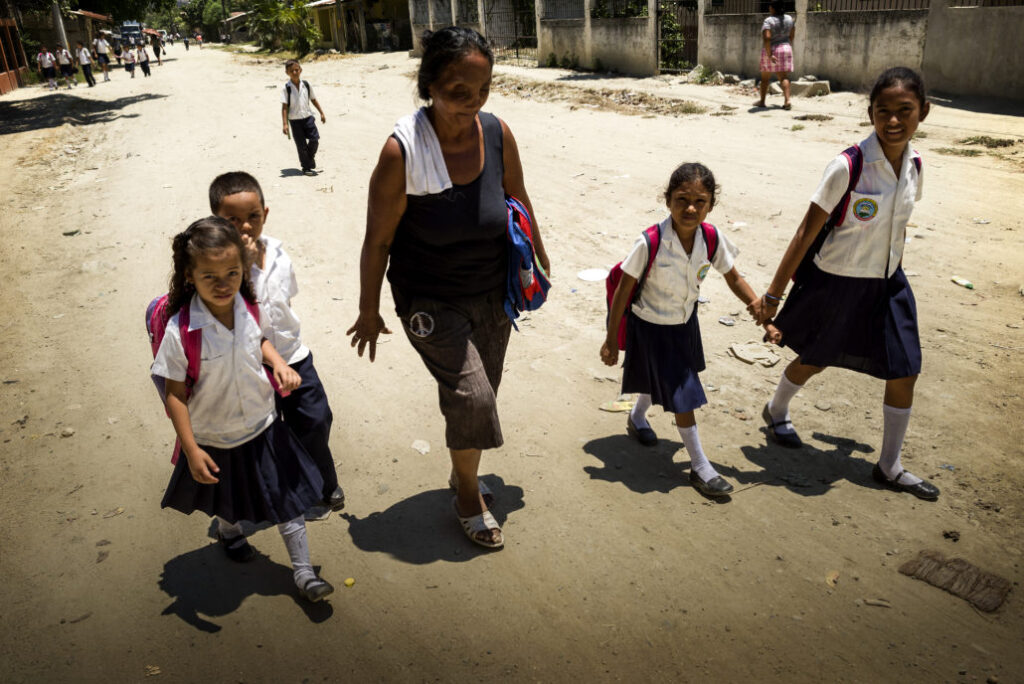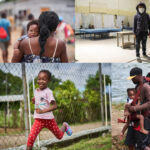TEGUCIGALPA — Per the Global Humanitarian Overview 2022, Latin America and the Caribbean has experienced a significant increase in the number of people in need since 2018, climbing from 9.6 million people to 26.4 million in 2021.
This increase owes, in part, to the increasing frequency and intensity of sudden-onset disasters and recurrent climate shocks, the devastating impacts of the ongoing COVID-19 pandemic (including being the world’s hardest-hit region with 18.5 per cent of all global cases and 30.3 per cent of all deaths despite comprising only 8.4 per cent of the world’s population), and challenging socio-economic conditions that are leaving 287 million people in poverty or extreme poverty.
As of December 2021, there are Humanitarian Response Plans (HRPs) in place in Colombia, El Salvador,
Guatemala, Haiti, Honduras and Venezuela with a collective US$1.6 billion in requirements to respond to 13.4 million of the 27.9 million people in need for 2022, up from the region’s lone HRP in Haiti in 2016.

REGIONAL: FOOD SECURITY
30% INCREASE IN PEOPLE LIVING IN HUNGER IN LATIN AMERICA & THE CARIBBEAN IN 2020
According to the 2021 Regional Overview of Food Security and Nutrition, recently published by FAO,
PAHO, WFP, UNICEF and IFAD, the number of people living in hunger in Latin America and the Caribbean rose by 13.8 million, a 30 per cent increase to 59 million people since 2019 that is the sharpest such increase of any region in the world.
While the recent spike is mostly related to the COVID-19 pandemic, the overall increase in number of people living in hunger between 2014 to 2020 has climbed as high as 79 per cent. This increase is pushing hunger in the region to its highest levels in 15 years. Additionally, moderate-to-severe food insecurity is now affecting 60 million additional people in the region, a world-leading 29 per cent increase from 2019 that brings the region’s population of food-insecure people to 267 million people. The Regional Overview further notes rising gender disparity, with 9.6 per cent more food-insecure women than men in 2020 compared to just 6.4 per cent in 2014.
The 70.3 per cent prevalence of food insecurity in the Caribbean (31 million people) is nearly double that of Mesoamerica’s 37.5 per cent (67.4 million people) and South America’s 39.2 percent (168.7 million people).
South America’s 20.5 per cent increase in the prevalence of food insecurity between 2014 and 2020 was higher than anywhere else in the region, compared to Mesoamerica’s 7.3 per cent increase (the report does not feature these figures for the Caribbean prior to 2020).
REGIONAL: COVID-19
Cases, deaths & people vaccinated (5 Dec)
Total cases 46,803,125 +0.3% from 28 Nov
Total deaths 1,543,871 +0.2% from 28 Nov
People vaccinated ) 445,387,054 +2.5% from 28 Nov (% of pop) 67.9% +1.6% from 28 Nov
Fully vaccinated 361,029,115 +3.8% from 28 Nov (% of pop) 55.0% +2.0% from 28 Nov
OMICRON
Health authorities in Brazil are reporting the country’s first two cases of the Omicron COVID-19 variant, the most recent Variant of Concern designated by WHO. The two cases are the first known cases in Latin America and the Caribbean.
Several countries in the region are already taking initial precautionary measures, with some country already closing borders to air travel from various countries in Africa including Angola,
Botswana, Egypt, Eswatini, Lesotho,
Malawi, Mozambique, Namibia, South Africa, Zambia and Zimbabwe.
EDUCATION
According to UNICEF, 71 million children and adolescents in the region continue to be affected by the total and partial closure of schools over the COVID-19 pandemic, losing about 158 days of classes since March 2020.
As of 15 November, only 10 countries in the region have fully reopened their schools, while 23 countries maintain partial closures and 4 continue with full closure. UNICEF notes that these figures are an improvement from as recently as early October, as several countries in the Caribbean have now begun the process of reopening.
HONDURAS
Health officials are expecting a mild spike in COVID-19 cases following general elections held on 28 November, which saw voters converge on polling stations across the country. The expectation of a slight increase owes, in part, to the virus’ behavior changing due to COVID-19 vaccines and reduced transmissibility compared to past periods of community spreads, according to Ministry of Health officials.
November saw a weekly average of some 500 new cases, with health officials forecasting 620 weekly cases for December. Together with the upcoming December holiday season and the gatherings likely to take place, authorities are projecting another 6,300 cases before 2022.
BOLIVIA
Authorities are concerned with cases continuing to rise for an eighth consecutive week in what they are calling a fourth wave. Intensive care unit (ICU) occupancy remains high in several cities across the country.
After recording record lows on the year in September, with daily cases at around 300 to 400, daily cases are now climbing back to over 1,000 for the first time since cases began decreasing after the peak of the third wave in July, which saw an alltime high of 3,800 cases in a day. Active cases are back over 25,000 after falling to as low as 18,500 in October.
Deaths remain low, however, with fewer than 20 daily deaths since September, which authorities attribute to COVID-19 vaccination.



